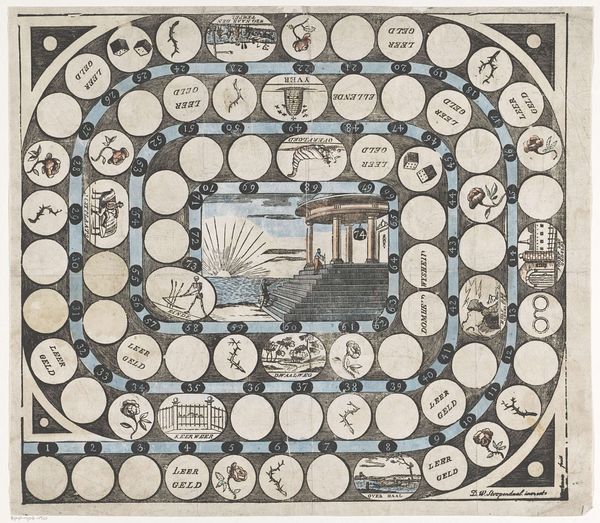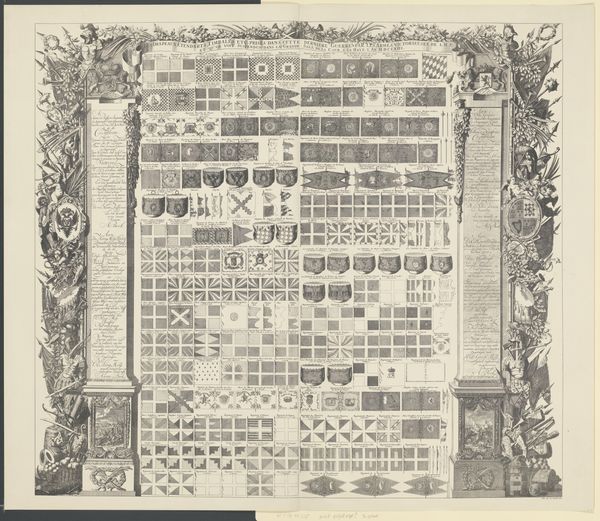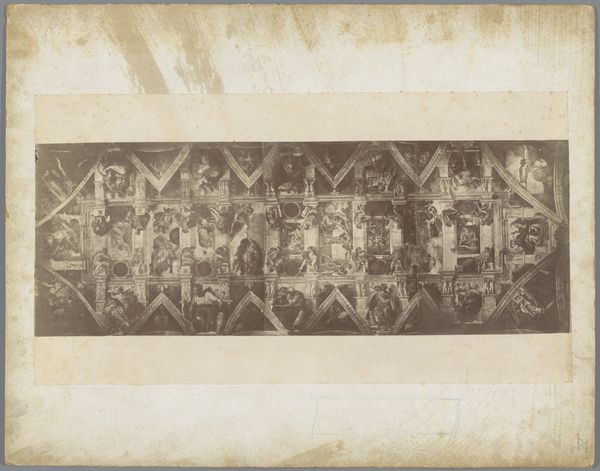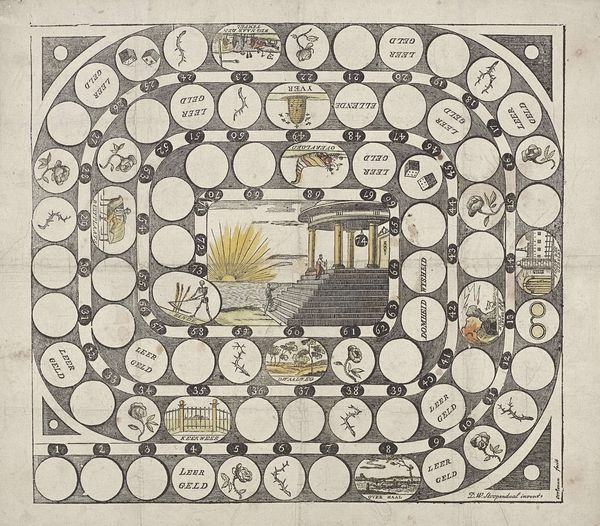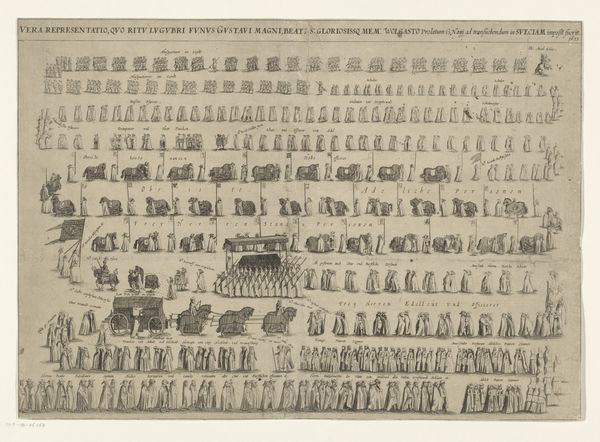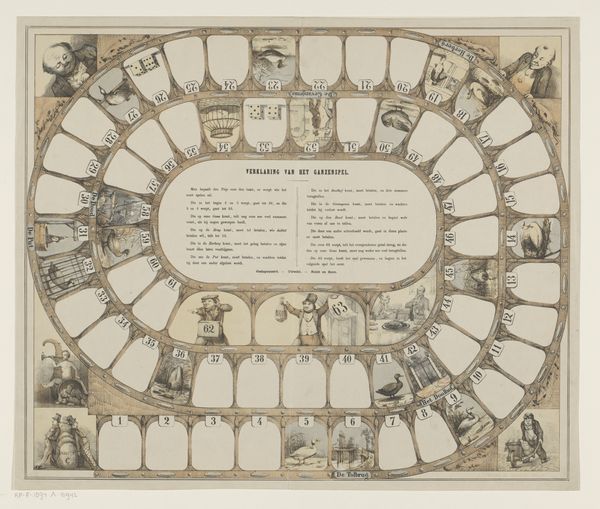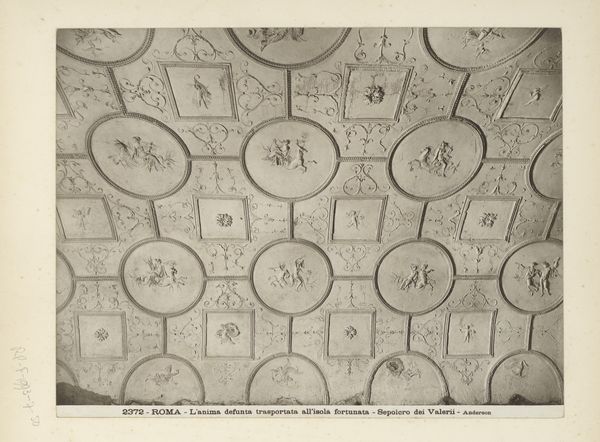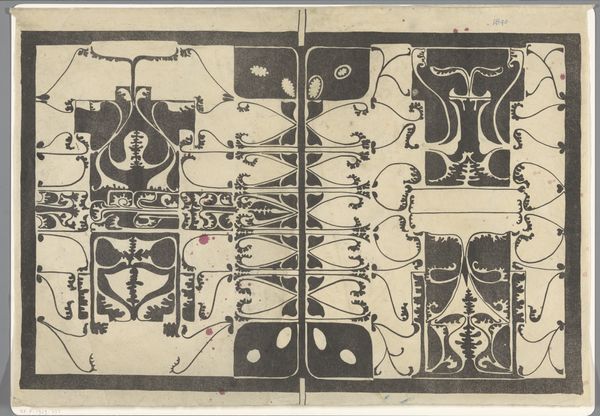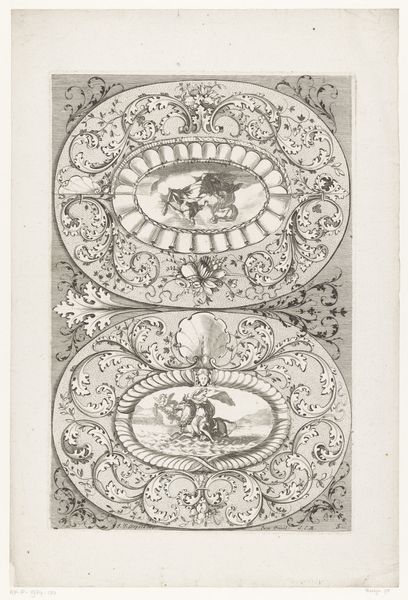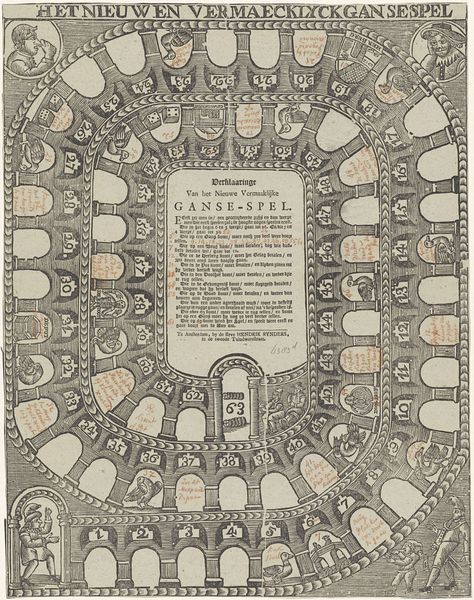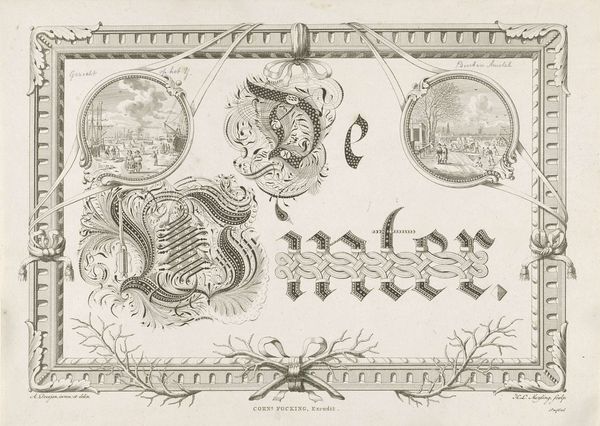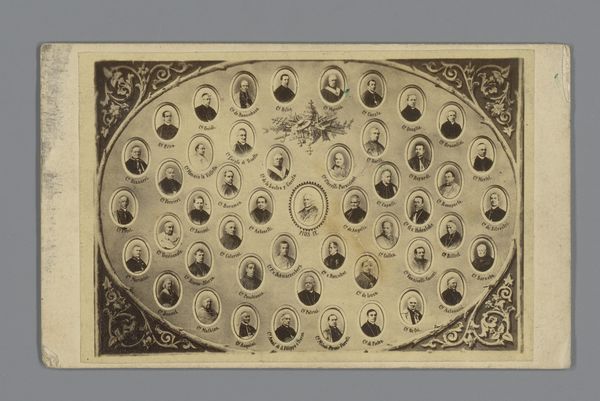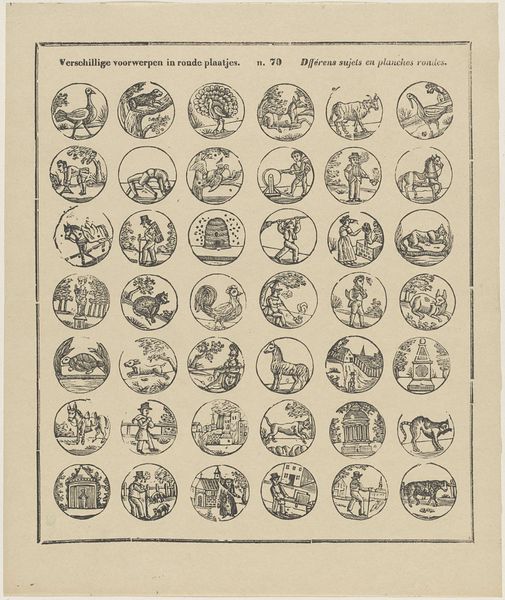
Spelregels bij het bordspel: Klaasje / Zevenster / Nieuw / Gezelschap-spel 1869
0:00
0:00
hendrikvleck
Rijksmuseum
print, etching
#
narrative-art
# print
#
etching
#
genre-painting
#
history-painting
Dimensions: height 203 mm, width 128 mm, height 204 mm, width 130 mm
Copyright: Rijks Museum: Open Domain
Curator: This is "Rules for the Board Game: Klaasje / Zevenster / New / Party Game," an etching by Hendrik Vleck from 1869. What are your first impressions? Editor: It looks like a board game! I'm struck by the mix of blank spaces and little vignettes within the circles. It seems both playful and strangely formal, like a game trying to teach something about society. What do you see in this piece? Curator: I see a snapshot of 19th-century Dutch social life cleverly disguised as entertainment. The imagery embedded in certain circles speaks volumes about gender roles and societal expectations of the time. Who is depicted and how are they depicted? Consider the clothing, posture and setting. What kind of stories are these images telling? Editor: Well, I see a woman being courted and a man reading a book alone... it almost seems like a commentary on leisure and the differing experiences available to men and women at that time. The blank circles...do they mean something in particular? Curator: Precisely. And yes, the empty spaces serve as a visual reminder that these societal rules were not always clearly defined or equally applied. Who got to advance and why was likely not transparent at all. How might we connect the experience of playing this game to the lived realities of people in the 1860s? Editor: So, this seemingly simple game acts as a mirror reflecting and perhaps even subtly critiquing the social structures of its time. I wouldn’t have considered that at first glance! Curator: Exactly! Seeing a game as a cultural artifact, revealing complex narratives about power and social dynamics, is the activist's impulse in art history. The act of play becomes another avenue for exploring social injustice and dominant ideologies. Editor: I'll definitely think about games differently from now on, understanding them as reflections of their social context. Thanks for pointing that out!
Comments
No comments
Be the first to comment and join the conversation on the ultimate creative platform.

